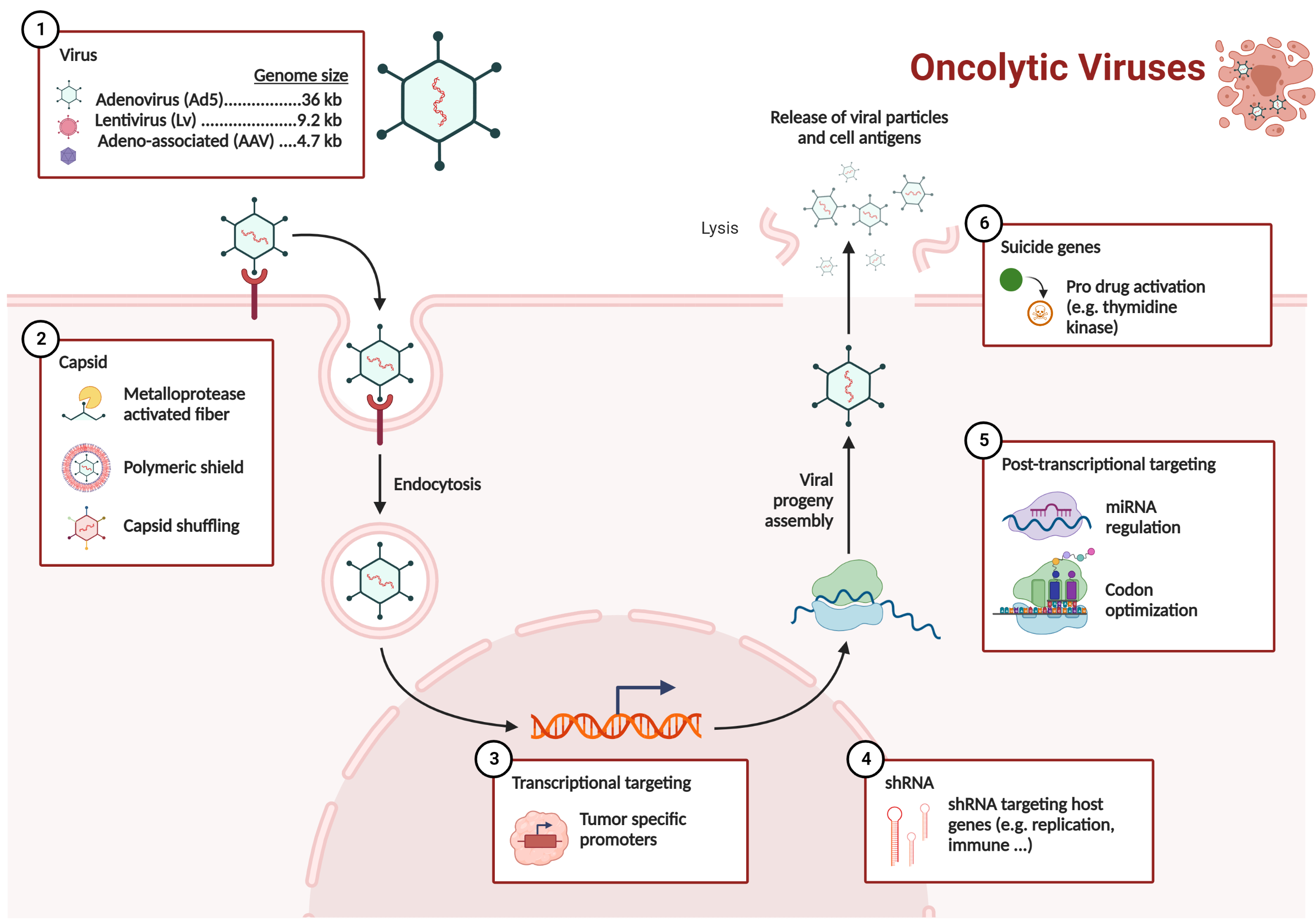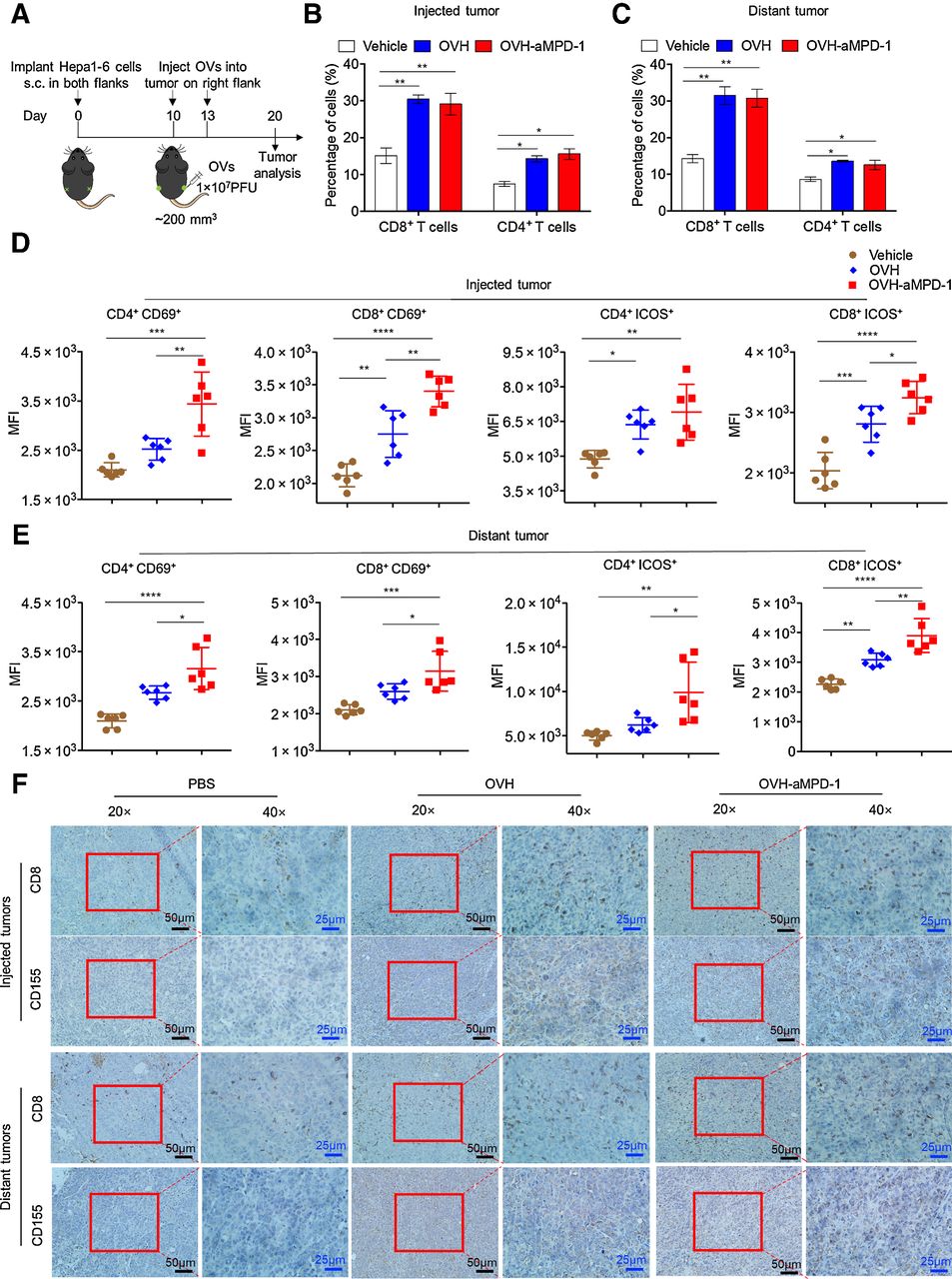- About Us
- One Stop Service
- Platform
In-Vitro
Molecular Assays
Cell-Based Functional Assays
In-Vivo
Pharmacology
Cancer PharmacologyInflammation Pharmacology - Join Us
- Contact Us
One Stop Oncolytic Virus Service

In Vitro Assays:
1. Oncolytic virus in vitro culture platform (detection of oncolytic virus expression and replication efficiency)
2. Verification of oncolytic virus cytotoxicity in vitro
3. Oncolytic virus induction and expression in vitro, as well as cytokine identification (IL2, g-IF, and so on).
Upregulation of PD-L1 expression in tumor cells by OVH-induced IFNs

(A) Treatment scheme for OVH infection and PD-L1 analysis. (B) PD-L1 expression in OVH-infected (GFP+) and noninfected (GFP−) Hepa1-6 cells (MOI = 5). Representative histograms for Hepa1-6 cells and MC38 cells are shown. (C) Quantification of the PD-L1 MFI in different infected cell lines. (D) PD-L1 upregulation in MC38 cells or Hepa1-6 cells treated with UV-inactivated supernatants from vehicle (PBS)-treated or OVH-infected cells (MOI = 5).
In Vivo Assays:
1. An in vivo model for detecting oncolytic virus activity
2. Identification of oncolytic virus-induced in vivo induction/expression of cytokines (IL2, g-IFNdeng) after treatment
3. Identification of immune cells induced/expressed in vivo by oncolytic viruses after treatment (CD4, CD8, NK, and so on).
OVH-aMPD-1 enhanced effector T-cell function

(A) Treatment scheme. Mice bearing Hepa1-6 tumors were intratumorally injected with vehicle (PBS), OVH, or OVH-aMPD-1, and tumors were collected on day 10 following virus injection and analyzed by flow cytometry. The percentages of tumor-infiltrating CD4+ T and CD8+ T cells isolated from the injected (B) and distant tumors (C), gated on the total CD45+ cell population. Expression of CD69 and ICOS on the surface of tumor-infiltrating CD4+ and CD8+ T cells in the vehicle-injected or virus-injected tumors (D) and distant tumors (E). F, IHC analysis of CD8+ T cells marker (CD8α) and CD155 in virus-injected tumor and distant tumor at 7 days after receiving intratumoral injection of two doses of OVH or OVH-aMPD-1 (1 × 107 PFU per dose) or vehicle.
Reference
Lin, Chaolong et al. “Intratumoral Delivery of a PD-1-Blocking scFv Encoded in Oncolytic HSV-1 Promotes Antitumor Immunity and Synergizes with TIGIT Blockade.” Cancer immunology research vol. 8,5 (2020): 632-647. doi:10.1158/2326-6066.CIR-19-0628

Shanghai Novopathway Biotechnology
Building No.5, East Huaxia Road No.333, Pudong New Area, Shanghai
BD Cooperation Email: BD@novopathway.com Tel: 021-5838 0618-501
Join Us Email: HR@novopathway.com Tel: 021-5838 0356

Beijing Sun-Novo Pharmaceutical Research
Building No.7, West Shuangying Road No.79 , Changping Area, Beijing
Website: http://www.sun-novo.com



